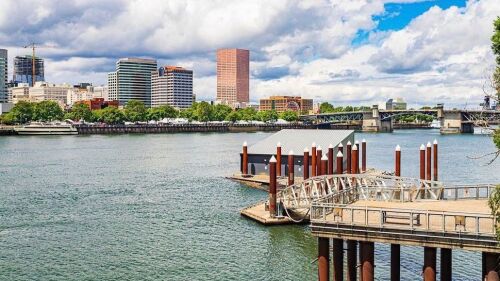There is no shortage of festive neighborhoods sprinkled across Portland this time of year, but one stands out from the rest. And its much-anticipated yearly tradition is back.
The English Tudor + cottage-style houses of Peacock Lane are nestled along four residential blocks between Stark and Belmont streets in Southeast Portland. Every holiday season, residents deck their halls in more than just boughs of holly — they bedazzle them with lights, Nativity scenes, Christmas trees, and iconic holiday characters. The overall effect? Storybook perfection.
The spectacle was canceled in 2020 due to the pandemic, but it’s back this year with a few changes.
- You’re welcome to see the lights, but only between 6-11 p.m. from Dec. 15-31.
- There won’t be any designated pedestrian-only nights so be sure to keep an eye out for cars if you’re visiting the neighborhood on foot.
- The hot chocolate booth will be closed. But no one’s stopping you from bringing your own mug to sip.
History
Peacock Lane residents have been putting up lights for decades, but pinpointing the exact year when the tradition began is tricky. The Oregonian first mentioned “a colorful Christmas display” on Peacock Lane in a December 1949 edition of its newspaper, while the Peacock Lane website lists 1932 as the year when decorations first went up.

It’s “fleece Navidad” at this Peacock Lane home | Photo by @meanwhileatthecottage
Preservation
The street was added to the National Register of Historic Places in 2017. Neighbors pursued the designation after a developer bought a home on the street, sparking concerns that new construction wouldn’t conform to the street’s existing character.












